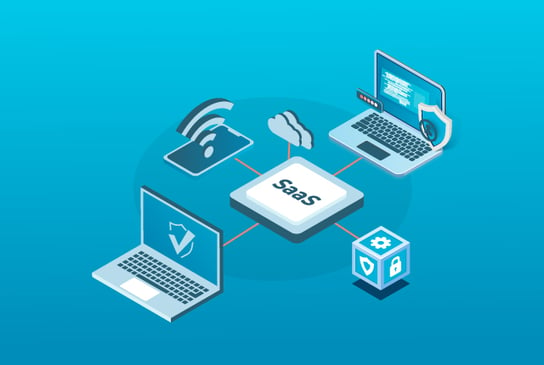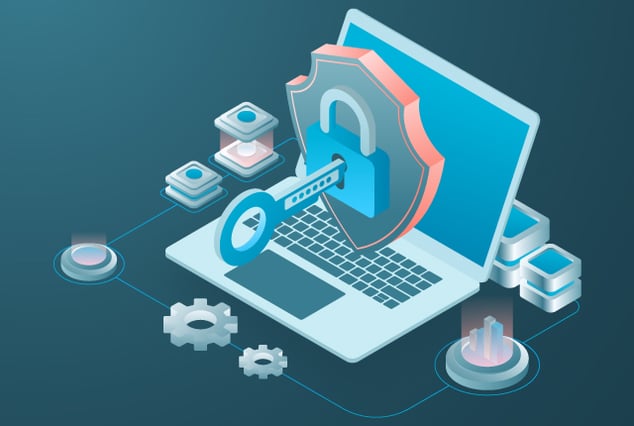
With the increasing adoption of SaaS (Software as a Service) platforms, the number of cyber threats and attacks is also rising. SaaS platforms store sensitive and confidential data, making them a prime target for cybercriminals. As a result, it is imperative to ensure the security of SaaS platforms to prevent data breaches, data theft, and unauthorized access. The potential loss of data and its impact on a company's reputation can be catastrophic. Therefore, implementing robust cybersecurity in SaaS is critical to protect SaaS platforms and their users.
SaaS Cyber Threats
The SaaS Cyber threats are security incidents that can have a cynical outcome for your network or other data management systems. SaaS companies can improve their client-side security posture by familiarizing themselves with these potential threat areas and methods of attack. Some of these threats are:
- Distributed Denial-of-Service (DDoS) Attack: This is a common web application threat. Hackers flood the company's server with traffic, which in return blocks customers and clients to access the website.
- JavaScript Injection Attack: Inadequate security measures of your software can lead bad actors to gain access to your information. Injecting malicious code directly into JavaScript helps hackers to gather confidential information from your customers.
- XML External Entity Injection: This is an application-layer cybersecurity attack. Phishing parties can evade your inadequate SaaS network security and view the matter of your server file system.
- SaaS Cloud Security: As cloud solutions are increasing day by day, so are the threats to these SaaS organizations. In the past couple of years, the IT industry has seen an increase in cloud solutions in order to support remote and hybrid employees. But not much has been implemented to improve the security of cloud solutions companies.
Loss to the SaaS Vendors Due to Intensified Cyber-Attacks
Cyber attacks on SaaS applications are becoming increasingly common due to weak internal security policies, misconfiguration mistakes, and more. These attacks can result in the public exposure of a user's private data, leading to a loss of trust in the application's service. This fear can lead to low ratings and decreased subscriptions for SaaS vendors, resulting in significant losses.
To address this issue, SaaS vendors must not only detect and neutralize cyber attacks but also educate their customers on how to keep their data safe and protect themselves from fraud or data breaches. By following mandatory prevention and encryption approaches, SaaS vendors can neutralize cyber threats proactively, leading to enhanced application safety and significant growth in the IT industry.
Solutions to Prevent Cyber Attacks
Since you are now familiar with the types of SaaS cyber attacks, let us now talk about the solutions. Here are some of the possible solutions to prevent cyber attacks on SaaS apps:
-
Well-Trained Testing Experts
Good cyber-security experts save SaaS applications and their client’s data from black hat hackers and conserve SaaS security. Thus, honeytraps have been deployed by cyber security experts, not only to detect and neutralize the cyber-attack on the SaaS application but also to fetch the attacker’s information, such as IP address, location, etc.
-
Javascript Injection Protection via Subscription Model
The SaaS stores its user’s data in the cloud. The security tools deployed in the cloud are the safeguards of the precise data/information of its users which forfend the data from the cyber-attacks by hackers. The subscription enables the stronger cybersecurity of a SaaS application.
QA services providers like QASource are turning their free app services into the Subscription based application modal. Thus, new time-to-time and fresh updates make the application more secure for the customers who have taken the application subscription than the free customers. It keeps the customers protected against the ever-changing threat landscape. Having frequent updates for an application because cybercriminals are using advanced technologies on a daily basis to increase the oscillation and effectiveness of their attacks, thus it becomes easy for them to break the security of outdated applications from updates.
-
Understand the Significance of Security Testing
As the primary task of QA teams is to deliver the best product to the customers before launching it to the general market audience, thus, SaaS application security testing plays an important role because the breach of security of any data/application an attacker can perform at the very first step.
When it comes to safeguarding the application and its linked user’s data, security testing becomes the first preference. The purpose of conducting the testing is to probe and neutralize the risks and vulnerabilities priorly to before it crashes an application.
Security Testing Techniques Used by QASource
QASource is committed to ensuring the security of SaaS applications by utilizing a range of effective testing techniques. Let us have a look at some of the testing techniques used by QASource to test SaaS application security:
-
Penetration Testing
Cybersecurity experts perform an exercise to probe and exploit presented vulnerabilities in a SaaS application. Various tools cyber security experts use to execute the Pen test on a SaaS application include Nmap, Wireshark, Metasploit framework, and Burp Suite.
-
Vulnerability Testing
It’s an application security exercise where QASource experts perform to catch, investigate, and report security pitfalls and vulnerabilities. This vulnerability scanning completes via various vulnerability scanning tools such as Nessus, OpenVAS, Retina CS community edition, and Astra Pen Test.
Apart from Penetration and Vulnerability testing, QA testing experts perform the SaaS application testing via other testing techniques i.e., Unit testing, Integration testing, User Acceptance testing, etc. which also play an equal and significant role to deliver the best and hassle-free services to the customers. Including it, the QASource experts are also working to keep the SaaS cyber security layered and tight so no attacker can breach it.
How to Prevent SaaS Cyber Threats
A cyber-attack is one of the terrible things that can happen to SaaS applications. As SaaS companies have shown impeccable growth in the past few years in the IT Industry. The number of attacks on SaaS companies is intensifying too, which is a threat to SaaS security. QASource helps in making the application stronger via testing the security measures below as well:
- Building a strong password: Stronger the password, the lesser will be the chances of a data breach. It should contain upper and lower cases, and digits as well as special characters. Setting an easily recognizable password can lead to an account getting hacked by giving an easy application account access to cyber attackers. As attackers apply numerous permutations and combinations to break the application password/security.
- Multifactor authentication in the application: The strong password will not be enough for the application’s security and safety. The multifactor authentication setup might play an exceptional role. The SaaS users should apply the authentication by adding the PIN/Pattern/Face verification.
- Encryption of the entire data: SaaS vendors should adhere to the required data encryption standards. Vendors should ensure that the data on the SaaS application service they are providing to the customers is secure. By setting up the following encryption methods to their application by SaaS companies/vendors, enhance security in order to save against Cyber threats/attacks:
- Private-key cryptography
- Hashing
- Encryption Algorithms
Customer Awareness Tips
Let us discuss some customer awareness tips that SaaS companies should apply:
- Make the customers aware of new application updates: Whenever the developers deploy any new change/functionality in an application, it’s a new add-on. Thus, the hired relationship managers should keep updating the clients about new application add-ons and their uses.
- The Current growth and achievements of the respective SaaS companies: The SaaS vendors should keep updating the customers about the company’s per-year growth so that customers can feel more secure and happy. Companies should do it by conducting offline and online seminars/magazines and other social platforms.
- Launch more effective subscription models to add more security: SaaS companies need to plan and launch more effective plans which hold more security and functionality for the customer. It will not only make the customers safer but enhance the social status and reputation of the application in the general audience.
SaaS companies should hire a good technical and customer service desk team and make it available 24 hours a day. So that the customer’s problems can be resolved anytime and resolved as soon as possible.
Conclusion
SaaS applications are exposed to a range of cyber threats, including DDoS attacks, JavaScript injection attacks, and XML external entity injection. These threats can have significant financial repercussions for SaaS providers. To mitigate cyber threats, SaaS providers can employ various measures. But it is suggested to take the help of expert testers like QASource. Visit QASource now to learn more about the range of available security testing services.


